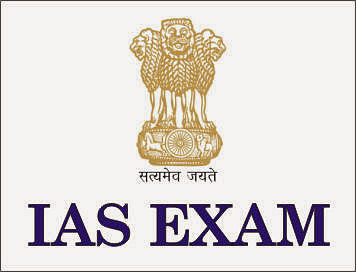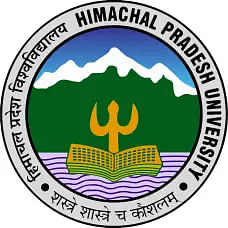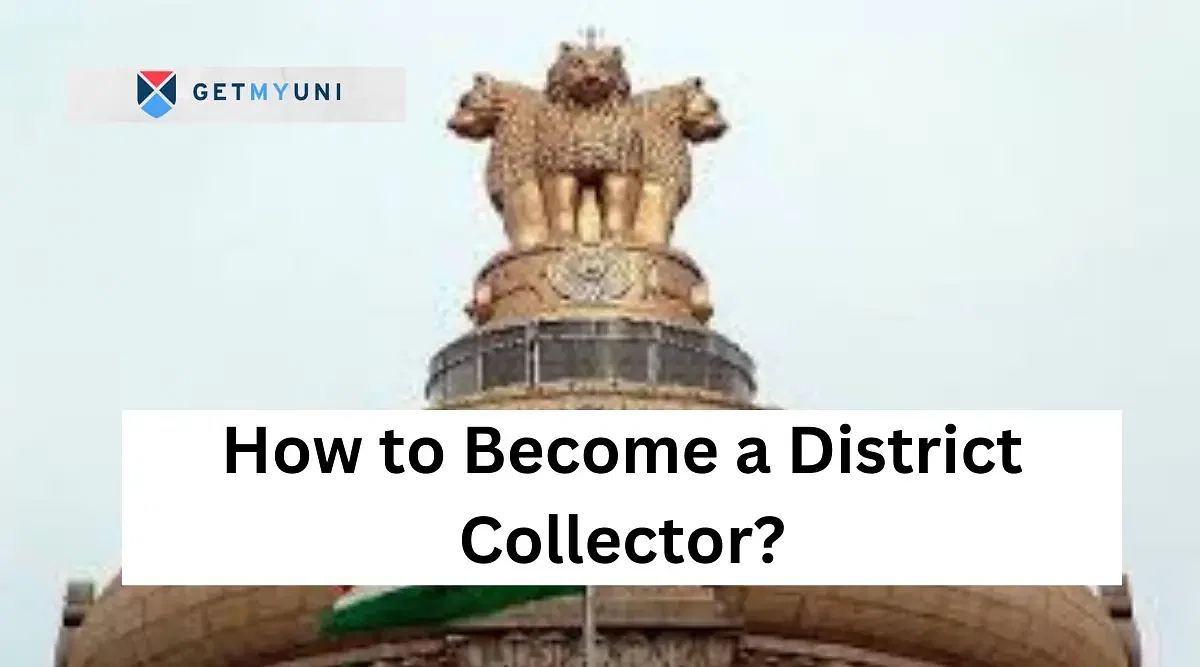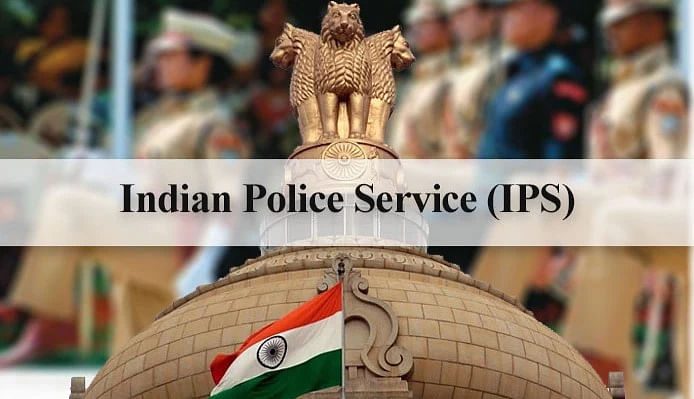
Table of Contents
UPSC IAS syllabus 2024 for preliminary and the main exam is available on the official website. Knowing the syllabus and exam pattern of UPSC IAS 2024 Exam is very important. So candidates have to know about them to prepare well for the exam.
Candidates can also take a look at the UPSAC IAS 2024 Reference Books to know the kind of questions asked in UPSC IAS Exam 2024. Any changes in the syllabus would be updated by the examination authority on their official website.
UPSC IAS 2024 Syllabus for Prelims
It consists of two papers and each paper is of 200 marks.
Syllabus for IAS 2024 Prelims Paper I (General Studies)
- Current events of national and international importance.
- History of India and Indian National Movement.
- Indian and World Geography - Physical, Social, Economic Geography of India and the World.
- Indian Polity and Governance - Constitution, Political System, Panchayati Raj, Public Policy, Rights Issues, etc.
- Economic and Social Development Sustainable Development, Poverty, Inclusion, Demographics, Social Sector initiatives, etc.
- General issues on Environmental Ecology, Bio-diversity and Climate Change - that do not require subject specialisationSY.
- General Science.
Syllabus for IAS 2024 Prelims Paper II (CSAT)
- Interpersonal skills including communication skills;
- Logical reasoning and analytical ability
- Decision-making and problem-solving
- General mental ability
- Basic numeracy (numbers and their relations, orders of magnitude, etc.) (Class X level), Data interpretation (charts, graphs, tables, data sufficiency etc. - Class X level)
- English Language Comprehension skills (Class X level).
- Comprehension
UPSC IAS 2024 Syllabus for Mains
UPSC IAS 2024 Mains exam consists of 9 papers in which the first two papers are qualifiers and the score in the other seven papers are considered to calculate the merit list.
IAS 2024 Mains Paper A and B Syllabus (Indian Languages and English)
- Comprehension of given passages
- Precis Writing
- Usage and Vocabulary
- Short Essays
- Translation from English to the Indian language and vice-versa.
Note
- The candidates can choose any modern Indian language.
- These two papers are qualifying in nature.
- Each paper consists of questions on the above-mentioned areas and the paper would be of 300 marks each.
IAS 2024 Mains Paper I - Essay (250 marks)
- Candidates are asked to write short essays on the given topics.
- The essays are judged based on the cohesion and the style of writing.
IAS 2024 Mains Paper II - General Studies 1 (250 marks)
- Indian culture will cover the salient aspects of Art Forms, Literature and Architecture from ancient to modern times.
- Modern Indian history from about the middle of the eighteenth century until the present- significant events, personalities, issues
- The Freedom Struggle – its various stages and important contributors /contributions from different parts of the country.
- Post-independence consolidation and reorganisation within the country.
- History of the world will include events from 18th century such as industrial revolution, world wars, changes in of national boundaries, colonisation, decolonization, political philosophies like communism, capitalism, socialism etc.- their forms and effect on the society.
- Salient features of Indian Society, Diversity of India.
- The role of women and women’s organisation, population and associated issues, poverty and developmental issues, urbanisation, their problems and their remedies.
- Effects of globalisation on Indian society
- Social empowerment, communalism, regionalism & secularism.
- Salient features of world’s physical geography.
- Distribution of key natural resources across the world (including South Asia and the Indian sub-continent); factors responsible for the location of primary, secondary, and tertiary sector industries in various parts of the world (including India)
- Important Geophysical phenomena such as earthquakes, Tsunami, Volcanic activity, cyclone etc., geographical features and their location- changes in critical geographical features (including waterbodies and ice-caps) and in flora and fauna and the effects of such changes.
IAS 2024 Mains Paper III - General Studies 2 (250 marks)
- Indian Constitution- historical underpinnings, evolution, features, amendments, significant provisions and basic structure.
- Functions and responsibilities of the Union and the States, issues and challenges pertaining to the federal structure, devolution of powers and finances up to local levels and challenges therein.
- Separation of powers between various organs disputes redressal mechanisms and institutions.
- Comparison of the Indian constitutional scheme with that of other countries
- Parliament and State Legislatures – structure, functioning, the conduct of business, powers & privileges and issues arising out of these.
- Structure, organisation and functioning of the Executive and the Judiciary Ministries and Departments of the Government; pressure groups and formal/informal associations and their role in the Polity.
- Salient features of the Representation of People’s Act.
- Appointment to various Constitutional posts, powers, functions and responsibilities of various Constitutional Bodies.
- Statutory, regulatory and various quasi-judicial bodies
- Government policies and interventions for development in various sectors and issues arising out of their design and implementation.
- Development processes and the development industry- the role of NGOs, SHGs, various groups and associations, donors, charities, institutional and other stakeholders
- Welfare schemes for vulnerable sections of the population by the Centre and States and the performance of these schemes; mechanisms, laws, institutions and Bodies constituted for the protection and betterment of these vulnerable sections.
- Issues relating to development and management of Social Sector/Services relating to Health, Education, Human Resources.
- Issues relating to poverty and hunger.
- Important aspects of governance, transparency and accountability, e-governance- applications, models, successes, limitations, and potential; citizens charters, transparency & accountability and institutional and other measures.
- The role of civil services in a democracy.
- India and its neighbourhood- relations.
- Bilateral, regional and global groupings and agreements involving India and/or affecting India’s interests
- Effect of policies and politics of developed and developing countries on India’s interests, Indian diaspora.
- Important International institutions, agencies and fora- their structure, mandate.
IAS 2024 Mains Paper IV - General Studies 3 (250 Marks)
- Indian Economy and issues relating to planning, mobilisation of resources, growth, development and employment.
- Inclusive growth and issues arising from it.
- Government Budgeting.
- Major crops cropping patterns in various parts of the country, different types of irrigation and irrigation systems storage, transport and marketing of agricultural produce and issues and related constraints; e-technology in the aid of farmers
- Issues related to direct and indirect farm subsidies and minimum support prices; Public Distribution System- objectives, functioning, limitations, revamping; issues of buffer stocks and food security; Technology missions; economics of animal-rearing.
- Food processing and related industries in India- scope and significance, location, upstream and downstream requirements, supply chain management.
- Land reforms in India.
- Effects of liberalisation on the economy, changes in industrial policy and their effects on industrial growth.
- Infrastructure Energy, Ports, Roads, Airports, Railways etc.
- Investment models.
- Science and Technology- developments and their applications and effects in everyday life
- Achievements of Indians in science & technology; indigenization of technology and developing new technology.
- Awareness in the fields of IT, Space, Computers, robotics, nanotechnology, biotechnology and issues relating to intellectual property rights.
- Conservation, environmental pollution and degradation, environmental impact assessment
- Disaster and disaster management.
- Linkages between development and spread of extremism.
- The role of external state and nonstate actors in creating challenges to internal security.
- Challenges to internal security through communication networks, role of media and social networking sites in internal security challenges, basics of cyber security; money-laundering and its prevention
- Security challenges and their management in border areas; linkages of organised crime with terrorism
- Various Security forces and agencies and their mandate
IAS 2024 Mains Paper V - General Studies 4 (250 Marks)
- Ethics and Human Interface Essence, determinants and consequences of Ethics in human actions; dimensions of ethics; ethics in private and public relationships. Human Values – lessons from the lives and teachings of great leaders, reformers and administrators; the role of family, society and educational institutions in inculcating values.
- Attitude content, structure, function; its influence and relation with thought and behaviour; moral and political attitudes; social influence and persuasion.
- Aptitude and foundational values for Civil Service, integrity, impartiality and non-partisanship, objectivity, dedication to public service, empathy, tolerance and compassion towards the weaker sections.
- Emotional intelligence concepts, and their utilities and application in administration and governance.
- Contributions of moral thinkers and philosophers from India and the world.
- Public/Civil service values and Ethics in Public administration Status and problems; ethical concerns and dilemmas in government and private institutions; laws, rules, regulations and conscience as sources of ethical guidance; accountability and ethical governance; strengthening of ethical and moral values in governance; ethical issues in international relations and funding; corporate governance.
- Probity in Governance Concept of public service; Philosophical basis of governance and probity; Information sharing and transparency in government, Right to Information, Codes of Ethics, Codes of Conduct, Citizen’s Charters, Work culture, Quality of service delivery, Utilisation of public funds, challenges of corruption.
- Case Studies on above issues.
IAS 2024 MainsPaper VI and Paper VII - Optional 1 and 2 (250 Marks each)
The candidates can choose the optional subjects from the following list
- Agriculture
- Animal Husbandry and Veterinary Science
- Anthropology
- Botany
- Chemistry
- Civil Engineering
- Commerce and Accountancy
- Economics
- Electrical Engineering
- Geography
- Geology
- History
- Law
- Management
- Mathematics
- Mechanical Engineering
- Medical Science
- Philosophy
- Physics
- Political Science and International Relations
- Psychology
- Public Administration
- Sociology
- Statistics
- Zoology
The syllabus for optional subjects is given below
Geography
Part I Principles of Geography & Physical Geography
Geomorphology
- Factors controlling landform development;
- endogenetic and exogenetic forces;
- Origin and evolution of the earths crust;
- Fundamentals of geomagnetism;
- Physical conditions of the earths interior;
- Geosynclines; Continental drift;
- Isostasy;
- Plate tectonics;
- Recent views on mountain building;
- Vulcanicity;
- Earthquakes and Tsunamis;
- Concepts of geomorphic cycles and Landscape development;
- Denudation chronology;
- Channel morphology;
- Erosion surfaces;
- Slope development;
- Applied Geomorphology Geohydrology, economic geology and environment
Climatology
- Temperature and pressure belts of the world;
- Heat budget of the earth;
- Atmospheric circulation;
- atmospheric stability and instability.
- Planetary and local winds;
- Monsoons and jet streams;
- Air masses and frontogenesis, Temperate and tropical cyclones;
- Types and distribution of precipitation;
- Weather and Climate; Koppens, Thornthwaites and Trewarthas classification of world climates;
- Hydrological cycle;
- Global climatic change and role and response of man in climatic changes, Applied climatology and Urban climate.
Oceanography
- Bottom topography of the Atlantic, Indian and Pacific Oceans;
- Temperature and salinity of the oceans;
- Heat and salt budgets, Ocean deposits;
- Waves, currents and tides;
- Marine resources biotic, mineral and energy resources;
- Coral reefs, coral bleaching;
- Sea level changes;
- Law of the sea and marine pollution.
Biogeography
- Genesis of soils;
- Classification and distribution of soils;
- Soil profile;
- Soil erosion, Degradation and conservation;
- Factors influencing world distribution of plants and animals;
- Problems of deforestation and conservation measures;
- Social forestry;
- agro-forestry;
- Wildlife;
- Major gene pool centres.
Environmental Geography
- Principle of ecology;
- Human ecological adaptations;
- Influence of man on ecology and environment;
- Global and regional ecological changes and imbalances;
- Ecosystem their management and conservation;
- Environmental degradation, management and conservation;
- Biodiversity and Sustainable development;
- Environmental policy;
- Environmental hazards and remedial measures;
- Environmental education and legislation.
Human Geography
Perspectives in Human Geography
- Areal differentiation;
- regional synthesis;
- Dichotomy and dualism;
- Environmentalism;
- Quantitative revolution and locational analysis;
- radical, behavioural, human and welfare approaches;
- Languages, religions and secularisation;
- Cultural regions of the world;
- Human development index.
Economic Geography
- World economic development measurement and problems;
- World resources and their distribution;
- Energy crisis; the limits to growth;
- World agriculture typology of agricultural regions;
- agricultural inputs and productivity;
- Food and nutrition problems;
- Food security; famine causes, effects and remedies;
- World Industries locational patterns and problems;
- patterns of world trade.
Population and Settlement Geography
- Growth and distribution of world population;
- demographic attributes;
- Causes and consequences of migration;
- concepts of over - under-and optimum population;
- Population theories, world population problems and policies, Social well-being and quality of life;
- Population as social capital.
- Types and patterns of rural settlements;
- Environmental issues in rural settlements;
- Hierarchy of urban settlements;
- Urban morphology Concepts of primate city and rank-size rule;
- Functional classification of towns;
- Sphere of urban influence;
- Rural - urban fringe;
- Satellite towns;
- Problems and remedies of urbanisation;
- Sustainable development of cities.
Regional Planning
- Concept of a region;
- types of regions and methods of regionalisation;
- growth centres and growth poles;
- regional imbalances;
- environmental issues in regional planning;
- planning for sustainable development.
Models, Theories and Laws in Human Geography
- System Analysis in Human Geography;
- Malthusian, Marxian and Demographic Transition models;
- Central Place theories of Christaller and Losch;
- Von Thunens model of agricultural location; Webers model of industrial location;
- Rostovs model of stages of growth.
- Heartland and Rimland theories;
- Laws of international boundaries and frontiers.
- Webers model of industrial location;
- Rostovs model of stages of growth.
- Heartland and Rimland theories;
- laws of international boundaries and frontiers.
Note Candidates will be required to answer one compulsory map question pertinent to subjects covered by this paper.
Part II Geography Of India
Physical Setting
- Space relationship of India with neighbouring countries;
- Structure and relief;
- Drainage system and watersheds;
- Physiographic regions;
- Mechanism of Indian monsoons and rainfall patterns, Tropical cyclones and western disturbances;
- Floods and droughts;
- Climatic regions;
- Natural vegetation;
- Soil types and their distributions.
Resources
- Land, surface and groundwater, energy, minerals, biotic and marine resources;
- Forest and wildlife resources and their conservation;
- Energy crisis.
Agriculture
- Infrastructure irrigation, seeds, fertilizers, power;
- Institutional factors land holdings, land tenure and land reforms;
- Cropping pattern, agricultural productivity, agricultural intensity, crop combination, land capability;
- Agro and social forestry;
- Green revolution and its socio-economic and ecological implications;
- Significance of dry farming;
- Livestock resources and white revolution;
- aqua - culture; sericulture, apiculture and poultry;
- agricultural regionalisation;
- agro-climatic zones;
- agro- ecological regions.
Industry
- Evolution of industries ;
- Locational factors of cotton, jute, textile, iron and steel, aluminium, fertilizer, paper, chemical and pharmaceutical, automobile, cottage and agro-based industries;
- Industrial houses and complexes including public sector undertakings;
- Industrial regionalisation;
- New industrial policies;
- Multinationals and liberalisation;
- Special Economic Zones;
- Tourism including eco -tourism.
Transport, Communication and Trade
- Road, railway, waterway, airway and pipeline networks and their complementary roles in regional development;
- Growing importance of ports on national and foreign trade;
- Trade balance;
- Trade Policy;
- Export processing zones;
- Developments in communication and information technology and their impacts on economy and society;
- Indian space programme.
Cultural Setting
- Historical Perspective of Indian Society;
- Racial, linguistic and ethnic diversities;
- religious minorities;
- major tribes, tribal areas and their problems;
- cultural regions;
- Growth, distribution and density of population;
- Demographic attributes sex ratio, age structure, literacy rate, workforce, dependency ratio, longevity;
- migration (inter-regional, intra-regional and international) and associated problems;
- Population problems and policies;
- Health indicators.
Settlements
- Types, patterns and morphology of rural settlements;
- Urban developments;
- Morphology of Indian cities;
- Functional classification of Indian cities;
- Conurbations and metropolitan regions;
- urban sprawl;
- Slums and associated problems;
- town planning;
- Problems of urbanisation and remedies.
Regional Development and Planning
- Experience of regional planning in India;
- Five Year Plans;
- Integrated rural development programmes;
- Panchayati Raj and decentralised planning;
- Command area development; Watershed management;
- Planning for backwards area, desert, drought prone, hill, tribal area development;
- multi-level planning;
- Regional planning and development of island territories.
Political Aspects
- The Geographical basis of Indian federalism;
- State reorganisation;
- Emergence of new states;
- Regional consciousness and interstate issues;
- the international boundary of India and related issues;
- Cross-border terrorism;
- Indias role in world affairs;
- Geopolitics of South Asia and Indian Ocean realm.
Contemporary Issues
- Ecological issues Environmental hazards landslides earthquakes , Tsunamis , floods and droughts, epidemics;
- Issues relating to environmental pollution;
- Changes in patterns of land use;
- Principles of environmental impact assessment and environmental management;
- Population explosion and food security;
- Environmental degradation;
- Deforestation, desertification and soil erosion;
- Problems of agrarian and industrial unrest;
- Regional disparities in economic development;
- Concept of sustainable growth and development;
- Environmental awareness;
- Linkage of rivers;
- Globalisation and Indian economy.
Note Candidates will be required to answer one compulsory map question pertinent to subjects covered by this paper.
Agriculture
Paper I
- Ecology and its relevance to man, natural resources, their sustainable management and conservation. Physical and social environment as factors of crop distribution and production. Agroecology; cropping pattern as indicators of environments. Environmental pollution and associated hazards to crops, animals and humans. Climate change International conventions and global initiatives. Greenhouse effect and global warming. Advanced tools for ecosystem analysis Remote sensing (RS) and Geographic Information Systems (GIS).
- Cropping patterns in different agro-climatic zones of the country. The impact of high-yielding and short-duration varieties on shifts in cropping patterns. Concepts of various cropping and farming systems. Organic and Precision farming. Package of practices for production of important cereals, pulses, oilseeds, fibres, sugar, commercial and fodder crops.
- Important features and scope of various types of forestry plantations such as social forestry, agro-forestry, and natural forests. Propagation of forest plants. Forest products. Agroforestry and value addition. Conservation of forest flora and fauna.
- Weeds, their characteristics, dissemination and association with various crops; their multiplications; cultural, biological, and chemical control of weeds.
- Soil- physical, chemical and biological properties. Processes and factors of soil formation. Soils of India. Mineral and organic constituents of soils and their role in maintaining soil productivity. Essential plant nutrients and other beneficial elements in soils and plants. Principles of soil fertility, soil testing and fertiliser recommendations, integrated nutrient management.
- Biofertilizers. Losses of nitrogen in the soil, nitrogen-use efficiency in submerged rice soils, nitrogen fixation in soils. Efficient phosphorus and potassium use. Problem soils and their reclamation. Soil factors affecting greenhouse gas emission.
- Soil conservation, integrated watershed management. Soil erosion and its management. Dry land agriculture and its problems. Technology for stabilising agriculture production in rainfed areas.
- Water-use efficiency in relation to crop production, criteria for scheduling irrigations, ways and means of reducing run-off losses of irrigation water. Rainwater harvesting. Drip and sprinkler irrigation. Drainage of waterlogged soils, quality of irrigation water, the effect of industrial effluents on soil and water pollution. Irrigation projects in India.
- Farm management, scope, importance and characteristics, farm planning. Optimum resource use and budgeting. Economics of different types of farming systems. Marketing management strategies for development, market intelligence. Price fluctuations and their cost; the role of co-operatives in the agricultural economy; types and systems of farming and factors affecting them. Agricultural price policy. Crop Insurance.
- Agricultural extension, its importance and role, methods of evaluation of extension programmes, socio-economic survey and status of big, small and marginal farmers and landless agricultural labourers. Training programmes for extension workers. The Role of Krishi Vigyan Kendras (KVK) in the dissemination of Agricultural technologies. Non-Government Organization (NGO) and self- help group approach for rural development.
Paper-II
- Cell structure, function and cell cycle. Synthesis, structure and function of genetic material. Laws of heredity. Chromosome structure, chromosomal aberrations, linkage and cross-over, and their significance in recombination breeding. Polyploidy, euploids and aneuploids. Mutations - and their role in crop improvement. Heritability, sterility and incompatibility, classification and their application in crop improvement. Cytoplasmic inheritance, sex-linked, sex-influenced and sex-limited characters.
- History of plant breeding. Modes of reproduction, selfing and crossing techniques. Origin, evolution and domestication of crop plants, the center of origin, the law of homologous series, crop genetic resources- conservation and utilisation. Application of principles of plant breeding, improvement of crop plants. Molecular markers and their application in plant improvement. Pure-line selection, pedigree, Mass and recurrent selections, combining ability, its significance in plant breeding. Heterosis and its exploitation. Somatic hybridization. Breeding for disease and pest resistance. The role of interspecific and intergeneric hybridization. The role of genetic engineering and biotechnology in crop improvement. Genetically modified crop plants.
- Seed production and processing technologies. Seed certification, seed testing and storage. DNA fingerprinting and seed registration. The role of public and private sectors in seed production and marketing. Intellectual Property Rights (IPR) issues, WTO issues and its impact on Agriculture.
- Principles of Plant Physiology with reference to plant nutrition, absorption, translocation and metabolism of nutrients. Soil - water- plant relationship.
- Enzymes and plant pigments; photosynthesis- modern concepts and factors affecting the process, aerobic and anaerobic respiration; C3, C4 and CAM mechanisms. Carbohydrate, protein and fat metabolism. Growth and development; photoperiodism and vernalization. Plant growth substances and their role in crop production. Physiology of seed development and germination; dormancy. Stress physiology drought, salt and water stress.
- Major fruits, plantation crops, vegetables, spices and flower crops. Package practices of major horticultural crops. Protected cultivation and high-tech horticulture. Post harvest technology and value addition of fruits and vegetables. Landscaping and commercial floriculture. Medicinal and aromatic plants. The role of fruits and vegetables in human nutrition.
- Diagnosis of pests and diseases of field crops, vegetables, orchard and plantation crops and their economic importance. Classification of pests and diseases and their management. Integrated pest and disease management. Storage pests and their management. Biological control of pests and diseases. Epidemiology and forecasting of major crop pests and diseases. Plant quarantine measures. Pesticides, their formulation and modes of action.
- Food production and consumption trends in India. Food security and growing population vision 2024. Reasons for grain surplus. National and international food policies. Production, procurement, distribution constraints. Availability of food grains, per capita expenditure on food. Trends in poverty, Public Distribution System and Below Poverty Line population, Targeted Public Distribution System (PDS), policy implementation in context to globalisation. Processing constraints.
- Relation of food production to National Dietary Guidelines and Food consumption pattern. Food-based dietary approaches to eliminate hunger. Nutrient deficiency Micronutrient deficiency Protein Energy Malnutrition or Protein-Calorie Malnutrition (PEM or PCM), Micronutrient deficiency and HRD in the context of work capacity of women and children. Food grain productivity and food security.
Geology
Paper-1
General Geology
- The Solar System, Meteorites, Origin and interior of the earth and age of earth;
- Volcanoes-causes and products, Volcanic belts;
- Earthquakes- causes , effects, Seismic zones of India;
- Island arcs, trenches and mid-ocean ridges;
- Continental drifts;
- Seafloor spreading, Plate tectonics;
- Isostasy
Geomorphology and Remote Sensing
- Basic concepts of geomorphology;
- Weathering and soil formations;
- Landforms, slopes and drainage;
- Geomorphic cycles and their interpretation;
- Morphology and its relation to structures and lithology;
- Coastal geomorphology;
- Applications of geomorphology in mineral prospecting, civil engineering;
- Hydrology and environmental studies;
- Geomorphology of the Indian subcontinent.
- Aerial photographs and their interpretation-merits and limitations;
- The Electromagnetic spectrum;
- Orbiting satellites and sensor systems;
- Indian Remote Sensing Satellites;
- Satellites data products;
- Applications of remote sensing in geology;
- The Geographic Information Systems (GIS) and Global Positioning System (GPS) - its applications.
Structural Geology
- Principles of geologic mapping and map reading, Projection diagrams, Stress and strain ellipsoid and stress-strain relationships of elastic, plastic and viscous materials; Strain markers in deformed rocks;
- Behaviour of minerals and rocks under deformation conditions;
- Folds and faults classification and mechanics; Structural analysis of folds, foliations, lineations, joints and faults, unconformities;
- Time relationship between crystallization and deformation.
Paleontology
- Species- definition and nomenclature;
- Megafossils and Microfossils;
- Modes of preservation of fossils;
- Different kinds of microfossils;
- Application of Microfossils in correlation, petroleum exploration, paleoclimatic and paleoceanographic studies;
- Evolutionary trend in Hominidae, Equidae and Proboscidae;
- Siwalik fauna;
- Gondwana flora and fauna and its importance;
- Index fossils and their significance.
Indian Stratigraphic
- Classification of stratigraphic sequences litho-stratigraphic, biostratigraphic, chronostratigraphic and magnetostratigraphic and their interrelationships;
- Distribution and classification of Precambrian rocks of India;
- Study of stratigraphic distribution and lithology of Phanerozoic rocks of India with reference to fauna, flora and economic importance;
- Major boundary problems- Cambrian/Precambrian, Permian/Triassic, Cretaceous/Tertiary and Pliocene/Pleistocene;
- Study of climatic conditions, paleogeography and igneous activity in the Indian subcontinent in the geological past;
- Tectonic framework of India;
- Evolution of the Himalayas.
Hydrogeology and Engineering Geology
- Hydrologic cycle and genetic classification of water;
- Movement of subsurface water;
- Springs;
- Porosity, permeability, hydraulic conductivity, transmissivity and storage coefficient, classification of aquifers;
- Water-bearing characteristics of rocks;
- Groundwater chemistry;
- Salt water intrusion;
- Types of wells; Drainage basin morphometry;
- Exploration for groundwater;
- Groundwater recharge;
- Problems and management of groundwater;
- Rainwater harvesting;
- Engineering properties of rocks;
- Geological investigations for dams, tunnels highways, railway and bridges;
- Rock as construction material;
- Landslides-causes, prevention and rehabilitation;
- Earthquake-resistant structures.
Paper-II
Mineralogy
- Classification of crystals into systems and classes of symmetry;
- an International system of crystallographic notation;
- Use of projection diagrams to represent crystal symmetry;
- Elements of X-ray crystallography.
- Physical and chemical characters of rock forming silicate mineral groups;
- Structural classification of silicates;
- Common minerals of igneous and metamorphic rocks;
- Minerals of the carbonate, phosphate, sulphide and halide groups;
- Clay minerals.
- Optical properties of common rock forming minerals;
- Pleochroism, extinction angle, double refraction, birefringence, twinning and dispersion in minerals.
Igneous and Metamorphic Petrology
- Generation and crystallization of magmas;
- Crystallization of albite-anorthite, diopside-anorthite and diopside-wollastonite-silica systems;
- Bowen's Reaction Principle; Magmatic differentiation and assimilation;
- Petrogenetic significance of the textures and structures of igneous rocks;
- Petrography and petrogenesis of granite, syenite, diorite, basic and ultrabasic groups, charnockite, anorthosite and alkaline rocks;
- Carbonatites;
- Deccan volcanic province.Types and agents of metamorphism; Metamorphic grades and zones;
- Phase rule
- Facies of regional and contact metamorphism;
- ACF and AKF diagrams;
- Textures and structures of metamorphic rocks;
- Metamorphism of arenaceous, argillaceous and basic rocks;
- Minerals assemblages Retrograde metamorphism;
- Metasomatism and granitization, migmatites, Granulite terrains of India.
Sedimentary Petrology
- Sediments and Sedimentary Rocks Processes of formation;
- diagenesis and lithification;
- Clastic and non-clastic rocks-their classification, petrography and depositional environment;
- Sedimentary facies and provenance;
- Sedimentary structures and their significance;
- Heavy minerals and their significance;
- Sedimentary basins of India.
Economic Geology
- Ore, ore minerals and gangue, tenor of ore, classification of ore deposits;
- Process of formation of minerals deposits;
- Controls of ore localization;
- Ore textures and structures;
- Metallogenic epochs and provinces;
- Geology of the important Indian deposits of aluminium, chromium, copper, gold, iron, lead zinc, manganese, titanium, uranium and thorium and industrial minerals;
- Deposits of coal and petroleum in India;
- National Mineral Policy;
- Conservation and utilization of mineral resources;
- Marine mineral resources and Law of Sea.
Mining Geology
- Methods of prospecting-geological, geophysical, geochemical and geobotanical;
- Techniques of sampling;
- Estimation of reserves or ore;
- Methods of exploration and mining metallic ores, industrial minerals, marine mineral resources and building stones;
- Mineral beneficiation and ore dressing.
Geochemistry and Environmental Geology
- Cosmic abundance of elements;
- Composition of the planets and meteorites;
- Structure and composition of Earth and distribution of elements;
- Trace elements;
- Elements of crystal chemistry-types of chemical bonds, coordination number;
- Isomorphism and polymorphism;
- Elementary thermodynamics.
- Natural hazards-floods, mass wasting, coastal hazards, earthquakes and volcanic activity and mitigation;
- Environmental impact of urbanization, mining, industrial and radioactive waste disposal, use of fertilizers, dumping of mine waste and fly ash;
- Pollution of ground and surface water, marine pollution;
- Environment protection - legislative measures in India;
- Sea level changes causes and impact.
Physics
PAPER - I
Mechanics of Particles
- Laws of motion;
- conservation of energy and momentum, applications to rotating frames, centripetal and Coriol is accelerations;
- Motion under a central force;
- Conservation of angular momentum, Kepler's laws;
- Fields and potentials;
- Gravitational field and potential due to spherical bodies, Gauss and Poisson equations, gravitational self-energy;
- Two-body problem;
- Reduced mass;
- Rutherford scattering;
- Centre of mass, laboratory reference frames.
Mechanics of Rigid Bodies
- System of particles;
- Centre of mass, angular momentum, equations of motion;
- Conservation theorems for energy, momentum and angular momentum;
- Elastic and inelastic collisions;
- Rigid body;
- Degrees of freedom, Euler's theorem, angular velocity, angular momentum, moments of inertia, theorems of parallel and perpendicular axes, equation of motion for rotation; Molecular rotations (as rigid bodies);
- Di and tri-atomic molecules; Processional motion; top, gyroscope.
Mechanics of Continuous Media
- Elasticity, Hooke's law and elastic constants of isotropic solids and their inter-relation;
- Streamline (Laminar) flow, viscosity, Poiseuille's equation, Bernoulli's equation, Stokes' law and applications.
Special Relativity
- Michelson-Morley experiment and its implications;
- Lorentz transformations-length contraction, time dilation, the addition of relativistic velocities, aberration and Doppler effect, mass-energy relation, simple applications to a decay process;
- Four-dimensional momentum vector;
- Covariance of equations of physics.
Waves and Optics
Waves
- Simple harmonic motion, damped oscillation, forced oscillation and resonance;
- Beats;
- Stationary waves in a string;
- Pulses and wave packets;
- Phase and group velocities;
- Reflection and Refraction from Huygens' principle.
Geometrical Optics
- Laws of reflection and refraction from Fermat's principle;
- Matrix method in paraxial optics-thin lens formula, nodal planes, system of two thin lenses, chromatic and spherical aberrations.
- Interference Interference of light-Young's experiment, Newton's rings, interference by thin films, Michelson interferometer;
- Multiple beam interference and Fabry-Perot interferometer.
Diffraction
- Fraunhofer diffraction-single slit, double slit, diffraction grating, resolving power;
- Diffraction by a circular aperture and the Airy pattern;
- Fresnel diffraction half-period zones and zone plates, circular aperture.
Polarisation and Modern Optics
- Production and detection of linearly and circularly polarised light;
- Double refraction, quarter wave plate;
- Optical activity;
- Principles of fibre optics, attenuation;
- Pulse dispersion in step index and parabolic index fibres;
- Material dispersion, single mode fibres;
- Lasers-Einstein A and B coefficients;
- Ruby and He-Ne lasers;
- Characteristics of laser light-spatial and temporal coherence;
- Focusing of laser beams;
- Three-level scheme for laser operation;
- Holography and simple applications.
Electricity and Magnetism
Electrostatics and Magnetostatics
- Laplace and Poisson equations in electrostatics and their applications;
- Energy of a system of charges, multiple expansion of scalar potential;
- Method of images and its applications; Potential and field due to a dipole, force and torque on a dipole in an external field;
- Dielectrics, polarization;
- Solutions to boundary-value problems-conducting and dielectric spheres in a uniform electric field;
- Magnetic shell, uniformly magnetized sphere;
- Ferromagnetic materials, hysteresis, energy loss.
Current Electricity
- Kirchhoff's laws and their applications;
- Biot-Savart law, Ampere's law, Faraday's law, Lenz' law;
- Self and mutual inductances;
- Mean and r m s values in AC circuits;
- DC and AC circuits with R, L and C components;
- Series and parallel resonances;
- Quality factor;
- Principle of transformer.
Electromagnetic Waves and Blackbody Radiation
- Displacement current and Maxwell's equations;
- Wave equations in vacuum, Pointing theorem;
- Vector and scalar potentials;
- Electromagnetic field tensor, covariance of Maxwell's equations;
- Wave equations in isotropic dielectrics, reflection and refraction at the boundary of two dielectrics;
- Fresnel's relations;
- Total internal reflection;
- Normal and anomalous dispersion;
- Rayleigh scattering;
- Blackbody radiation and Planck's radiation law, Stefan - Boltzmann law, Wien's displacement law and Rayleigh-Jeans' law.
Thermal and Statistical Physics
Thermodynamics
- Laws of thermodynamics, reversible and irreversible processes, entropy;
- Isothermal, adiabatic, isobaric, isochoric processes and entropy changes;
- Otto and Diesel engines, Gibbs' phase rule and chemical potential;
- Vander Waals equation of state of a real gas, critical constants;
- Maxwell-Boltzmann distribution of molecular velocities, transport phenomena, equipartition and virial theorems;
- Dulong-Pet it, Einstein, and Debye's theories of specific heat of solids;
- Maxwell relations and applications;
- Clausius- Clapeyron equation;
- Adiabatic demagnetisation, Joule-Kelvin effect and liquefaction of gases.
Statistical Physics
- Macro and microstates, statistical distributions, Maxwell-Boltzmann, Bose-Einstein and Fermi-Dirac distributions, applications to the specific heat of gases and black body radiation;
- Concept of negative temperatures.
PAPER - II
Quantum Mechanics
- Wave-particle duality;
- Schroedinger equation and expectation values;
- Uncertainty principle;
- Solutions of the one-dimensional Schroedinger equation for a free particle (Gaussian wave-packet), particle in a box, particle in a finite well, linear harmonic oscillator;
- Reflection and transmission by a step potential and by a rectangular barrier;
- Particle in a three-dimensional box, density of states, free electron theory of metals;
- Angular momentum;
- Hydrogen atom;
- Spin half particles, properties of Pauli spin matrices.
Atomic and Molecular Physics
- Stern-Gerlach experiment, electron spin, fine structure of hydrogen atom;
- L-S coupling, J-J coupling;
- Spectroscopic notation of atomic states;
- Zeeman effect; Frank-Condon principle and applications;
- Elementary theory of rotational, vibrational and electronic spectra of diatomic molecules;
- Raman effect and molecular structure;
- Laser Raman spectroscopy;
- Importance of neutral hydrogen atom, molecular hydrogen and molecular hydrogen ion in astronomy;
- Fluorescence and Phosphorescence;
- Elementary theory and applications of NMR and EPR;
- Elementary ideas about Lamb shift and its significance.
Nuclear and Particle Physics
- Basic nuclear properties-size, binding energy, angular momentum, parity, magnetic moment;
- Semi-empirical mass formula and applications, mass parabolas;
- Ground state of deuteron, magnetic moment and non-central forces;
- Meson theory of nuclear forces; Salient features of nuclear forces;
- Shell model of the nucleus - successes and limitations;
- Violation of parity in beta decay;
- Gamma decay and internal conversion;
- Elementary ideas about Mossbauer spectroscopy;
- Q-value of nuclear reactions;
- Nuclear fission and fusion, energy production in stars;
- Nuclear reactors.
- Classification of elementary particles and their interactions;
- Conservation laws;
- Quark structure of hadrons;
- Field quanta of electroweak and strong interactions;
- Elementary ideas about the unification of forces;
- Physics of neutrinos.
Solid State Physics, Devices and Electronics
- Crystalline and amorphous structure of matter;
- Different crystal systems, space groups;
- Methods of determination of crystal structure;
- X-ray diffraction, scanning and transmission electron microscopies;
- Band theory of solids - conductors, insulators and semiconductors;
- Thermal properties of solids, specific heat, Debye theory;
- Magnetism para and ferromagnetism;
- Elements of superconductivity, Meissner effect, Josephson junctions and applications;
- Elementary ideas about high temperature superconductivity.
- Intrinsic and extrinsic semiconductors;
- p-n-p and n-p-n transistors;
- Amplifiers and Oscillators;
- Op-amps; FET, JFET and MOSFET;
- Digital electronics-Boolean identities, De Morgan's laws, logic gates and truth tables;
- Simple logic circuits;
- Thermostats, solar cells; Fundamentals of microprocessors and digital computers.
Commerce and Accountancy
PAPER - I
Accounting and Finance Accounting, Taxation & Auditing
Financial Accounting
- Accounting as a Financial Information System;
- Impact of Behavioural Sciences.
- Accounting Standards e.g., Accounting for Depreciation, Inventories, Research and Development Costs, Long-term Construction Contracts, Revenue Recognition, Fixed Assets, Contingencies, Foreign Exchange Transactions, Investments and Government Grants, Cash Flow Statement, Earnings Per Share.
- Accounting for Share Capital Transactions including Bonus Shares, Right Shares, Employees Stock Option and Buy- Back of Securities.
- Preparation and Presentation of Company Final Accounts.Amalgamation, Absorption and Reconstruction of Companies.
Cost Accounting
- Nature and Functions of Cost Accounting. Installation of Cost Accounting System. Cost Concepts related to Income Measurement, Profit Planning, Cost Control and Decision Making.
- Methods of Costing Job Costing, Process Costing, Activity Based Costing. Volume cost Profit Relationship as a tool of Profit Planning.
- Incremental Analysis/ Differential Costing as a Tool of Pricing Decisions, Product Decisions, Make or Buy Decisions, ShutDown Decisions etc. Techniques of Cost Control and Cost Reduction Budgeting as a Tool for Planning and Control. Standard Costing and Variance Analysis. Responsibility Accounting and Divisional Performance Measurement.
Taxation
Income Tax
- Definitions; Basis of Charge;
- Incomes which do not form Part of Total Income.
- Simple problems of Computation of Income (of Individuals only) under Various Heads, i.e., Salaries, Income from House Property, Profits and Gains from Business or Profession, Capital Gains, Income from other sources, Income of other Persons included in Assessee's Total Income.
- Set-Off and Carry Forward of Loss.Deductions from Gross Total Income.
- Salient Features/Provisions Related to VAT and Services Tax.
Auditing
- Company Audit Audit related to Divisible Profits, Dividends, Special Investigations, Tax audit. Audit of Banking, Insurance, Non-Profit Organisations and Charitable Societies/ Trusts/Organisations.
Financial Management, Financial Institutions and Markets
Financial Management
- Finance Function Nature, Scope and Objectives of Financial Management Risk and Return Relationship.
- Tools of Financial Analysis Ratio Analysis, Funds-Flow and Cash-Flow Statement.Capital Budgeting Decisions Process, Procedures and Appraisal Methods. Risk and Uncertainty Analysis and Methods.
- The cost of Capital Concept, Computation of Specific Costs and Weighted Average Cost of Capital. CAPM as a Tool of Determining Cost of Equity Capital
- Financing Decisions Theories of Capital Structure - Net Income (NI) Approach, Net Operating Income (NOI) Approach, MM Approach and Traditional Approach. Designing of Capital structure Types of Leverages (Operating, Financial and Combined) EBIT- EPS Analysis, and other Factors.
- Dividend Decisions and Valuation of Firm Walter's Model, MM Thesis, Gordan's Model Lintner's Model. Factors Affecting Dividend Policy.Working Capital Management Planning of Working Capital. Determinants of Working Capital. Components of Working Capital - Cash, Inventory and Receivables. Corporate Restructuring with focus on Mergers and Acquisitions (Financial aspects only)
Financial Markets and Institutions
- Indian Financial System An Overview Money Markets Participants, Structure and Instruments. Commercial Banks. Reforms in the Banking sector. Monetary and Credit Policy of RBI. RBI as a Regulator.
- Capital Market Primary and Secondary Market. Financial Market Instruments and Innovative Debt Instruments; SEBI as a Regulator.
- Financial Services Mutual Funds, Venture Capital, Credit Rating Agencies, Insurance and IRDA.
PAPER - II
Organisation Theory and Behaviour, Human Resource Management and Industrial Relations
Organisation Theory and Behaviour
Organisation Theory
- Nature and Concept of Organisation; External Environment of Organizations-Technological, Social, Political, Economical and Legal; Organizational Goals-Primary and Secondary goals, Single and Multiple Goals; Management by Objectives.
- Evolution of Organisation Theory Classical, Neo-classical and Systems Approach. Modern Concepts of Organization Theory Organizational Design, Organizational Structure and Organizational Culture.
- Organisational Design?Basic Challenges; Differentiation and Integration Process; Centralization and Decentralisation Process; Standardisation / Formalisation and Mutual Adjustment. Coordinating Formal and Informal Organisations. Mechanistic and Organic Structures
- Designing Organisational Structures Authority and Control; Line and Staff Functions, Specialisation and Coordination. Types of Organization Structure?Functional. Matrix Structure, Project Structure. Nature and Basis of Power, Sources of Power, Power Structure and Politics. The impact of Information Technology on Organizational Design and Structure. Managing Organizational Culture
Organisation Behaviour
- Meaning and Concept; Individual in organisations Personality, Theories, and Determinants; Perception-Meaning and Process.
- Motivation Concepts, Theories and Applications. Leadership-Theories and Styles. The quality of Work Life (QWL) Meaning and its impact on Performance, Ways of its Enhancement. Quality Circles (QC)?Meaning and their Importance. Management of Conflicts in Organisations. Transactional Analysis, Organizational Effectiveness, Management of Change.
Human Resources Management and Industrial Relations
Human Resources Management(HRM)
- Meaning, Nature and Scope of HRM, Human Resource Planning, Job Analysis, Job Description, Job Specification, Recruitment Process, Selection Process, Orientation and Placement, Training and Development Process, Performance Appraisal and 360° Feed Back, Salary and Wage Administration, Job Evaluation, Employee Welfare, Promotions, Transfers and Separations.
Industrial Relations (IR)
- Meaning, Nature, Importance and Scope of IR, Formation of Trade Unions, Trade Union Legislation, Trade Union Movement. in India. Recognition of Trade Unions, Problems of Trade Unions in India. The Impact of Liberalisation on Trade Union Movement. Nature of Industrial Disputes Strikes and Lockouts, Causes of Disputes, Prevention and Settlement of Disputes.
- Worker's Participation in Management Philosophy, Rationale, Present Day Status and Future Prospects.
- Adjudication and Collective Bargaining.
- Industrial Relations in Public Enterprises, Absenteeism and Labour Turnover in Indian Industries and their Causes and Remedies. ILO and its Function.
Management
Paper-I
Section-A
Managerial Function
- Concept and Foundations of Management, Evolution of Management Thoughts;
- Managerial Functions, Planning, Organizing, Controlling;
- Decision making; Role of Manager, Managerial skills;
- Entrepreneurship; Management of innovation;
- Managing in a global environment, Flexible Systems Management;
- Social responsibility and managerial ethics; Process and customer orientation;
- Managerial processes on the direct and indirect value chain.
Organisational Behaviour and Design
- Conceptual model of organisation behaviour;
- The individual processes, personality, values and attitude, perception, motivation, learning and reinforcement, work stress and stress management;
- The dynamics of organization behaviour power and politics, conflict and negotiation, leadership process and styles, communication;
- The Organizational Processes - decision-making, job design;
- Classical, Neoclassical and Contingency approaches to organizational design;
- Organizational theory and design - organizational culture, managing cultural diversity, learning organization;
- organizational change and development ; Knowledge-Based Enterprise systems and processes;
- Networked and virtual organisations.
Human Resource Management
- HR challenges;
- HRM functions;
- The future challenges of HRM;
- Strategic Management of Human Resources;
- Human resource planning;
- Job analysis;
- Job evaluation;
- Recruitment and Selection;
- Training and development;
- Promotion and transfer;
- Performance Management;
- Compensation management and benefits;
- Employee morale and productivity;
- Management of organizational climate and Industrial Relations;
- Human resources accounting and audit;
- Human resource information system;
- International human resource management
Accounting for Managers Financial Accounting
- concept, importance and scope, generally accepted accounting principles, preparation of financial statements with special reference to the analysis of a balance sheet and measurement of business income, inventory valuation and depreciation, financial statement analysis, fund flow analysis, the statement of cash flows;
- Management accounting The concept, need, importance and scope;
- Cost accounting records and processes, cost ledger and control accounts, reconciliation and integration between financial and cost accounts;
- Overhead cost and control, Job and process costing, Budget and budgetary control, Performance budgeting, Zero-base budgeting, relevant costing and costing for decision-making, standard costing and variance analysis, marginal costing and absorption costing
Financial Management
- Goals of finance function;
- Concepts of value and return;
- Valuation of bonds and shares;
- Management of working capital Estimation and financing;
- Management of cash, receivables, inventory and current liabilities;
- Cost of Capital; Capital Budgeting; Financial and operating leverage;
- Design of capital structure theories and practices;
- Shareholder value creation dividend policy, corporate financial policy and strategy, management of corporate distress and restructuring strategy;
- Capital and money markets institutions and instruments; Leasing, hire purchase and venture capital;
- Regulation of capital market;
- Risk and return portfolio theory;
- CAPM; APT; Financial derivatives option, futures, swap; Recent reforms in financial sector
Marketing Management
- Concept, Evolution and scope;
- Marketing strategy formulation and components of marketing plan;
- Segmenting and targeting the market;
- Positioning and differentiating the market offering;
- Analyzing competition;
- Analyzing consumer markets;
- Industrial buyer behaviour;
- Market research;
- Product Strategy;
- Pricing strategies;
- Designing and managing Marketing channels;
- Integrated marketing communications;
- Building customer satisfaction, Value and retention;
- Services and non-profit marketing;
- Ethics in marketing;
- Consumer protection;
- Internet Marketing;
- Retail Management;
- Customer relationship management;
- Concept of holistic marketing.
Paper-II
Quantitative Techniques in Decision Making
- Descriptive statistics tabular, graphical and numerical methods,introduction to probability, discrete and continuous probability distributions, inferential statistics sampling distributions, central limit theorem, hypothesis testing for differences between means and proportions, inference about population variances, Chi-square and ANOVA, simple correlation and regression, time series and forecasting, decision theory, index numbers;
- Linear programming problem formulation, simplex method and graphical solution, sensitivity analysis.
Production and Operations Management
- Fundamentals of operations management;
- Organizing for production;
- Aggregate production planning, capacity planning, plant design process planning, plant size and scale of operations, Management of facilities;
- Line balancing;
- Equipment replacement and maintenance;
- Production control;
- Supply chain management - vendor evaluation and audit;
- Quality management;
- Statistical process control, Six Sigma;
- Flexibility and agility in manufacturing systems;
- World class manufacturing;
- Project management concepts, R&D Management, Management of service operations;
- Role and importance of materials management, value analysis, make or buy decision;
- Inventory control, MRP;
- Waste management.
Management Information System
- Conceptual foundations of information systems;
- Information theory;
- Information Resource Management;
- Types of information systems;
- Systems development -Overview of systems and design;
- System development management life-cycle, Designing for online and distributed environments;
- Implementation and control of project;
- Trends in information technology;
- Managing data resource -Organising data; DSS and RDBMS;
- Enterprise Resource Planning (ERP), Expert systems, e-Business Architecture, e-Governance; Information systems planning, Flexibility in information systems;
- User involvement;
- Evaluation of information systems.
Government Business Interface
- State participation in business, Interaction between Government, Business and different Chambers of Commerce and Industry in India;
- Government's policy with regard to Small Scale Industries;
- Government clearances for establishing a new enterprise;
- Public Distribution System;
- Government control over price and distribution;
- Consumer Protection Act (CPA) and The Role of voluntary organisations in protecting consumers' rights;
- New Industrial Policy of the Government liberalisation, deregulation and privatisation; Indian planning system;
- Government policy concerning development of Backward areas/regions; The Responsibilities of the business as well as the Government to protect the environment;
- Indian planning system;
- Government policy concerning development of Backward areas/regions;
- The Responsibilities of the business as well as the Government to protect the environment; Corporate Governance; Cyber Laws.
- Government policy concerning development of Backward areas/regions;
- The Responsibilities of the business as well as the Government to protect the environment;
- Corporate Governance; Cyber Laws.
- The Responsibilities of the business as well as the Government to protect the environment; Corporate Governance; Cyber Laws.
Strategic Management
- Business policy as a field of study;
- Nature and scope of strategic management, Strategic intent, vision, objectives and policies;
- Process of strategic planning and implementation;
- Environmental analysis and internal analysis;
- SWOT analysis;
- Tools and techniques for strategic analysis - Impact Matrix The experience curve, BCG matrix, GEC mode, Industry Analysis, Concept of value chain;
- Strategic profile of a firm;
- Framework for analysing competition;
- Competitive advantage of a firm;
- Generic competitive strategies;
- Growth strategies, expansion, integration and diversification;
- Concept of core competence, Strategic flexibility; Reinventing Strategy;
- Strategy and structure;
- Chief Executive and Board;
- Turnaround Management;
- Management of strategic change;
- Strategic Alliances, Mergers and Acquisitions;
- Strategy and corporate evolution in the Indian context.
International Business
- International Business Environment;
- Changing composition of trade in goods and services;
- India's Foreign Trade Policy and Trends;
- Financing of International Trade;
- Regional Economic Cooperation; FTAs;
- Internationalisation of service firms;
- International production;
- Operation Management in International companies;
- International Taxation;
- Global competitiveness and technological developments;
- Global e-Business;
- Designing global organisational structure and control;
- Multicultural Management;
- Global business strategy;
- Global marketing strategies;
- Export Management; Export- Import Procedures;
- Joint Ventures;
- Foreign Investment
- Foreign direct investment and foreign portfolio investment;
- Cross-border Mergers and Acquisitions;
- Foreign Exchange Risk Exposure Management;
- World Financial Markets and International Banking;
- External Debt Management; Country Risk Analysis.
Statistics
Paper-I
Probability
- Sample space and events,
- probability measure and probability space,
- random variable as a measurable function,
- distribution function of a random variable,
- discrete and continuous-type random variable,
- probability mass function, probability density function,
- vector-valued random variable, marginal and conditional distributions,
- stochastic independence of events and of random variables, expectation and moments of a random variable,
- conditional expectation, convergence of a sequence of random variable in distribution,
- in probability, in path mean and almost everywhere, their criteria and inter-relations
- Chebyshev's inequality and Khintchine's weak law of large numbers,
- strong law of large numbers and Kolmogoroff's theorems, probability generating function, moment generating function,
- characteristic function,
- inversion theorem,
- Linderberg and Levy forms of central limit theorem,
- standard discrete and continuous probability distributions.
Statistical Inference
- Consistency,
- unbiasedness,
- efficiency,
- sufficiency,
- completeness,
- ancillary statistics,
- factorization theorem,
- exponential family of distribution and its properties,
- uniformly minimum variance unbiased (UMVU) estimation,
- Rao-Blackwell and Lehmann-Scheffe theorems,
- Cramer-Rao inequality for single parameter. Estimation by methods of moments,
- maximum likelihood,
- least squares,
- minimum chi-square and modified minimum chi-square,
- properties of maximum likelihood and other estimators,
- asymptotic efficiency,
- prior and posterior distributions,
- loss function,
- risk function,
- minimax estimator.
- Bayes estimators.
- Non-randomised and randomised tests,
- critical function,
- MP tests,
- Neyman-Pearson lemma,
- UMP tests,
- monotone likelihood ratio,
- similar and unbiased tests,
- UMPU tests for single parameter likelihood ratio test and its asymptotic distribution.
- Confidence bounds and its relation with tests.
- Kolmogoroff's test for goodness of fit and its consistency, sign test and its optimality.
- Wilcoxon signed-ranks test and its consistency,
- Kolmogorov-Smirnov two-sample test,
- run test,
- Wilcoxon-Mann-Whitney test and median test, their consistency and asymptotic normality.
- Wald's SPRT and its properties, OC and ASN functions for tests regarding parameters for Bernoulli, Poisson, normal and exponential distributions.
- Wald's fundamental identity.
Linear Inference and Multivariate Analysis
- Linear statistical models',
- theory of least squares and analysis of variance,
- Gauss-Markoff theory, normal equations,
- least squares estimates and their precision,
- test of significance and interval estimates based on least squares theory in one-way,
- two-way and three-way classified data,
- regression analysis, linear regression, curvilinear regression and orthogonal polynomials,
- multiple regression,
- multiple and partial correlations, estimation of variance and covariance components,
- multivariate normal distribution,
- Mahalanobis-D2 and Hotellings T2 statistics and their applications and properties,
- discriminant analysis,
- canonical correlations,
- principal component analysis.
Sampling Theory and Design of Experiments
- An outline of fixed-population and super-population approaches,
- distinctive features of finite population sampling,
- probability sampling designs,
- simple random sampling with and without replacement,
- stratified random sampling,
- systematic sampling and its efficacy,
- cluster sampling, two-stage and multi-stage sampling,
- ratio and regression methods of estimation involving one or more auxiliary variables,
- two-phase sampling,
- probability proportional to size sampling with and without replacement,
- the Hansen-Hurwitz and the Horvitz-Thompson estimators,
- non-negative variance estimation with reference to the Horvitz-Thompson estimator,
- non-sampling errors.
- Fixed effects model (two-way classification) random and mixed effects models (two-way classification with equal observation per cell),
- CRD, RBD, LSD and their analyses,
- Incomplete block designs,
- concepts of orthogonality and balance,
- BIBD, missing plot technique,
- factorial experiments and 2n and 32,
- confounding in factorial experiments,
- split-plot and simple lattice designs,
- transformation of data Duncans multiple range test.
Industrial Statistics
- Process and product control, the general theory of control charts, different types of control charts for variables and attributes, X, R, s, p, np and c charts, cumulative sum chart.
- Single, double, multiple and sequential sampling plans for attributes, OC, ASN, AOQ and ATI curves, concepts of producer's and consumer's risks, AQL, LTPD and AOQL, Sampling plans for variables, Use of Dodge-Roming tables.
- Concept of reliability, failure rate and reliability functions, the reliability of series and parallel systems and other simple configurations, renewal density and renewal function, Failure models exponential, Weibull, normal, lognormal.
- Problems in life testing, censored and truncated experiments for exponential models
Optimisation Techniques
- Different types of models in Operations Research, their construction and general methods of solution, simulation and Monte-Carlo methods formulation of linear programming (LP) problem, simple LP model and its graphical solution, the simple procedure, the two-phase method and the M-technique with artificial variables, the duality theory of LP and its economic interpretation, sensitivity analysis, transportation and assignment problems, rectangular games, two-person zero-sum games, methods of solution (graphical and algebraic).
- Replacement of failing or deteriorating items, group and individual replacement policies, the concept of scientific inventory management and analytical structure of inventory problems, simple models with deterministic and stochastic demand with and without lead time, storage models with particular reference to dam type.Homogeneous discrete-time Markov chains, transition probability matrix, classification of states and ergodic theorems, homogeneous continuous-time Markov chains, Poisson process, elements of queuing theory, M/M/1, M/M/K, G/M/1 and M/G/1 queues.
- Solution of statistical problems on computers using well-known statistical software packages like SPSS.
Quantitative Economics and Official Statistics
- Determination of trend, seasonal and cyclical components,
- Box-Jenkins method, tests for stationary series,
- ARIMA models and determination of orders of autoregressive and moving average components, forecasting.Commonly used index numbers-Laspeyre's, Paasche's and Fisher's ideal index numbers, chain-base index number, uses and limitations of index numbers, index number of wholesale prices, consumer prices, agricultural production and industrial production, test for index numbers-proportionality, time-reversal, factor-reversal and circular .
- General linear model,
- ordinary least square and generalised least squares methods of estimation,
- the problem of multicollinearity,
- consequences and solutions of multicollinearity,
- autocorrelation and its consequences
- heteroscedasticity of disturbances and its testing,
- test for independence of disturbances,
- the concept of structure and model for simultaneous equations,
- the problem of identification-rank and order conditions of identifiability,
- two-stage least square method of estimation.
- Present official statistical system in India relating to population,
- agriculture,industrial production, trade and prices,
- methods of collection of official statistics,
- their reliability and limitations, principal publications containing such statistics,
- various official agencies responsible for data collection and their main functions.
Demography and Psychometry
- Demographic data from census, registration,
- NSS other surveys, their limitations and uses,
- definition, construction and uses of vital rates and ratios,
- measures of fertility, reproduction rates, morbidity rate,
- standardised death rate, complete and abridged life tables,
- construction of life tables from vital statistics and census returns,
- uses of life tables,
- logistic and other population growth curves,
- fitting a logistic curve,
- population projection, stable population,
- quasi-stable population, techniques in the estimation of demographic parameters,
- standard classification by cause of death,
- health surveys and use of hospital statistics.
- quasi-stable population, techniques in estimation of demographic parameters,
- standard classification by cause of death, health surveys and use of hospital statistics.
Zoology
Paper-1
Non-chordata and Chordata
- Classification and relationship of various phyla up to subclasses Acoelomate and Coelomate, Protostomes and Deuterostomes, Bilateria and Radiata; Status of Protista, Parazoa, Onychophora and Hemichordata; Symmetry.
- Protozoa Locomotion, nutrition, reproduction, sex; General features and life history of Paramaecium, Monocystis, Plasmodium and Leishmania.
- Porifera Skeleton, canal system and reproduction.
- Cnidaria Polymorphism, defensive structures and their mechanism; coral reefs and their formation; metagenesis; general features and life history of Obelia and Aurelia.
- Platyhelminthes Parasitic adaptation; general features and life history of Fasciola and Taenia and their pathogenic symptoms.
- Nemathelminthes General features, life history, parasitic adaptation of Ascaris and Wuchereria.
- Annelida Coelom and metamerism; modes of life in polychaetes; general features and life history of Nereis, earthworm and leach.
- Arthropoda Larval forms and parasitism in Crustacea; vision and respiration in arthropods (Prawn, cockroach and scorpion); modification of mouth parts in insects (cockroach, mosquito, housefly, honey bee and butterfly); metamorphosis in insect and its hormonal regulation, social behaviour of Apis and termites.
- Mollusca Feeding, respiration, locomotion, general features and life history of Lamellidens, Pila and Sepia, torsion and detorsion in gastropods.
- Echinodermata Feeding, respiration, locomotion, larval forms, general features and life history of Asterias.
- Protochordata Origin of chordates; general features and life history of Branchiostoma and Herdmania.
- Pisces Respiration, locomotion and migration.
- Amphibia Origin of tetrapods, parental care, paedomorphosis.
- Reptilia; Origin of reptiles, skull types, status of Sphenodon and crocodiles
- Aves Origin of birds, flight adaptation, migration.
- Mammalia Origin of mammals, dentition, general features of egg laying mammals, pouched-mammals, aquatic mammals and primates, endocrine glands (pituitary, thyroid, parathyroid, adrenal, pancreas, gonads) and their interrelationships.
- Comparative functional anatomy of various systems of vertebrates (integument and its derivatives, endoskeleton, locomotory organs, digestive system, respiratory system, circulatory system including heart and aortic arches, urino-genital system, brain and sense organs (eye and ear).
Ecology
- Biosphere Concept of biosphere; biomes, Biogeochemical cycles, Human induced changes in atmosphere including green house effect, ecological succession, biomes and ecotones, community ecology.
- The concept of ecosystem; structure and function of ecosystem, types of ecosystem, ecological succession, ecological adaptation.
- Population; characteristics, population dynamics, population stabilization.
- Biodiversity and diversity conservation of natural resources.
- Wildlife of India.
- Remote sensing for sustainable development.
- Environmental biodegradation, pollution and its impact on biosphere and its prevention.
Ethology
- Behaviour Sensory filtering, reponsiveness, sign stimuli, learning and memory, instinct, habituation, conditioning, imprinting.
- Role of hormones in drive; role of pheromones in alarm spreading; crypsis, predator detection, predator tactics, social hierarchies in primates, social organization in insects.
- Orientation, navigation, homing, biological rhythms, biological clock, tidal, seasonal and circadian rhythms.
- Methods of studying animal behaviour including sexual conflict, selfishness, kinship and altruism.
Economic Zoology
- Apiculture, sericulture, lac culture, carp culture, pearl culture, prawn culture, vermiculture.
- Major infectious and communicable diseases (malaria, filaria, tuberculosis, cholera and AIDS) their vectors, pathogens and prevention.
- Cattle and livestock diseases, their pathogen (helminthes) and vectors (ticks, mites, Tabanus, Stomoxys).
- Pests of sugar cane (Pyrilla perpusiella) oil seed (Achaea janata) and rice (Sitophilus oryzae).
- Transgenic animals.
- Medical biotechnology, human genetic disease and genetic counselling, gene therapy.
- Forensic Biotechnology.
Biostatistics
- Designing of experiments; null hypothesis; correlation, regression, distribution and measure of central tendency, chi square, student-test, F-test (one-way & two-way F-test).
Instrumentation Methods
- Spectrophotometer, phase contrast and fluorescence microscopy, radioactive tracer, ultra centrifuge, gel electrophoresis, PCR, ELISA, FISH and chromosome painting.
- Electron microscopy (TEM, SEM).
Paper-II
Cell Biology
- Structure and function of cell and its organelles (nucleus, plasma membrane, mitochondria, Golgi bodies, endoplasmic reticulum, ribosomes, and lysosomes), cell division (mitosis and meiosis), mitotic spindle and mitotic apparatus, chromosome movements, chromosome type polytene and lambrush, organization of chromatin, heterochromatin, Cell cycle regulation.
- Nucleic acid topology, DNA motif, DNA replication, transcription, RNA processing, translation, protein foldings and transport.
Genetics
- Modern concept of gene, split gene, genetic regulation, genetic code.
- Sex chromosomes and their evolution, sex determination in Drosophila and man.
- Mendels laws of inheritance, recombination, linkage, multiple alleles, genetics of blood groups, pedigree analysis, hereditary diseases in man.
- Mutations and mutagenesis.
- Recombinant DNA technology; plasmid, cosmid, artificial chromosomes as vectors, transgenic, DNA cloning and whole animal cloning (principles and methods).
- Gene regulation and expression in prokaryotes and eukaryotes.
- Signal molecules, cell death, defects in signaling pathway and consequences.
- RFLP, RAPD and AFLP and application of RFLP in DNA finger printing, ribozyme technologies, human genome project, genomics and protomics.
Evolution
- Theories of origin of life.
- Theories of Evolution; Natural selection, the role of mutations in evolution, evolutionary patterns, molecular drive, mimicry, variation, isolation and speciation.
- Evolution of horse, elephant and man using fossil data.
- Hardy-Weinberg Law.
- Continental drift and distribution of animals.
Systematic
- Zoological nomenclature, international code, cladistics, molecular taxonomy and biodiversity.
Biochemistry
- Structure and role of carbohydrates, fats, fatty acids and cholesterol, proteins and amino-acids, nucleic acids.
- Bioenergetics.
- Glycolysis and Kreb cycle, oxidation and reduction, oxidative phosphorylation, energy conservation and release, ATP cycle, cyclic AMP- its structure and role.
- Hormone classification (steroid and peptide hormones), biosynthesis and functions.
- Enzymes types and mechanisms of action.
- Vitamins and coenzymes
- Immunoglobulin and immunity.
Physiology (with special reference to mammals)
- Composition and constituents of blood; blood groups and Rh factor in man, factors and mechanism of coagulation, iron metabolism, acid-base balance, thermo-regulation, anticoagulants.
- Haemoglobin Composition, types and role in transport of oxygen and carbon dioxide.
- Digestion and absorption Role of salivary glands, liver, pancreas and intestinal glands.
- Excretion nephron and regulation of urine formation; osmo-regulation and excretory product
- Muscles Types, mechanism of contraction of skeletal muscles, effects of exercise on muscles.
- Neuron nerve impulse ? its conduction and synaptic transmission, neurotransmitters.
- Vision, hearing and olfaction in man.
- Physiology of reproduction, puberty and menopause in human.
Developmental Biology
- Gametogenesis; spermatogenesis, composition of semen, in vitro and in vivo capacitation of mammalian sperm, Oogenesis, totipotency; fertilization, morphogenesis and morphogen, blastogenesis, establishment of body axes formation, fate map, gestulation in frog and chick; genes in development in chick, homeotic genes, development of eye and heart, placenta in mammals.
- Cell lineage, cell-to-cell interaction, Genetic and induced teratogenesis, role of thyroxine in control of metamorphosis in amphibia, paedogenesis and neoteny, cell death, ageing.
- Developmental genes in man, in vitro fertilisation and embryo transfer, cloning.
- Stem cells Sources, types and their use in human welfare
- Biogenetic law.
Literature Assamese
Paper-I (Answers must be written in Assamese)
Section-A
Language
- History of the origin and development of the Assamese language-its position among the Indo-Aryan Languages-periods in its history.
- Developments of Assamese prose.
- Vowels and consonants of the Assamese languages-rules of phonetic changes with stress on Assamese coming down from Old Indo-Aryan.
- Assamese vocabulary-and its sources.
- Morphology of the language-conjugation-enclitic definitives and pleonastic suffixes.
- Dilectical divergences-the standard colloquial and the Kamrupi dialect in particulars.
- Assamese scripts-its evolution through the ages till 19th century A.D.
Section-B
Literary Criticism and Literary History
- Principles of Literary criticism up to New criticism.
- Different literary genres.
- Development of literary forms in Assamese.
- Development of literary criticism in Assamese.
- Periods of the literary history of Assam from the earliest beginnings, i.e. from the period of the charyyageets with their socio-cultural background the proto Assamese-Pre-Sankaradeva-Sankaradeva-post Sankaradeva-Modern period (from the coming of the Britishers)-Post-Independence period. Special emphasis is to be given on the Vaisnavite period, the Gonkani and the post-Independence period.
This paper will require first-hand reading of the texts prescribed and will be designed to test the candidates' critical ability. Answers must be written in Assamese.
Section-A
- Rãmãyana (Ayodhya Kãnda only)-by Madhava Kandali.
- Pãrijãt-Harana-by Sankaradeva.
- Rãsakrïdã-by Sankaradeva (From Kirtan Ghosa).
- Barge-by Madhavadeva
- Rãjasûya-by Madhavadeva.
- Kãthã-Bhãgavata (Books I and II)-by Baikunthanath Bhattacharyya.
- Gurucarit-Kathã (Sankaradeva's Part only)-ed. by Maheswar Neog.
Section-B
- Mor Jeevan Soñwaran-by Lakshminath Bezbaroa.
- Kripãbar Barbaruãr Kãkatar Topola-by Lakshminath Bezbaroa.
- Pratimã-by Chandra Kumar Agarwalla.
- Gãoñburhã-by Padmanath Gohain Barua.
- Monamatî-by Rajanikanta Bordoloi.
- Purani Asamîyã Sãhitya-by Banikanta Kakati.
- Kãrengar Ligirî-by Jyotiprasad Agarwalla
- Jeevanar Bãtat-by Bina Barwa (Birinchi Kumar Barua)
- Mrityunjoy-by Birendrakumar Bhattachary-ya
- Samrãt-by Navakanta Barua.
Literature Bengali
Paper-I
History of Language and Literature.
Answers must be written in Bangali.
Section-A
Topics from the History of Bangla language
- The chronological track from Proto Indo-European to Bangla (Family tree with branches and approximate dates).
- Historical stages of Bangla (Old, Middle, New) and their linguistic features.
- Dialects of Bangla and their distinguishing characteristics.
- Elements of Bangla Vocabulary.
- Forms of Bangla Literary Prose-Sadhu and Chalit.
- Processes of language change relevant for Bangla.
- Apinihiti (Anaptyxis), Abhishruti (umlaut), Murdhanyibhavan (cerebralization), Nasikyibhavan (Nasalization), Samibhavan (Assimilation), Sadrishya (Analogy), Svaragama (Vowel insertion)-Adi Svaragama, Madhya Svaragama or Svarabhakti, Antya Svaragama, Svarasangati (Vowel hormony), y-shruti and w-shruti.
- Problems of standardization and reform of alphabet and spelling, and those of transliteration and Romanization.
- Phonology, Morphology and Syntax of Modern Bangla. (Sounds of Modern Bangla, Conjuncts; word formations, compounds; basic sentence patterns.)
Section-B
Topics from the History of Bangla Literature.
- Periodization of Bangla Literature Old Bangla and Middle Bangla.
- Points of difference between modern and pre-modern Bangla Literature.
- Roots and reasons behind the emergence of modernity in Bangla Literature.
- Evolution of various Middle Bangla forms Mangal kavyas, Vaishnava lyrics, Adapted narratives (Ramayana, Mahabharata, Bhagavata) and religious biographies.
- Secular forms in middle Bangla literature.
- Narrative and lyric trends in the nineteenth century Bangla poetry.
- Development of prose.
- Bangla dramatic literature (nineteenth century, Tagore, Post-1944 Bangla drama).
- Tagore and post-Tagoreans.
- Fiction, major authors (Bankimchandra, Tagore, Saratchandra, Bibhutibusan, Tarasankar, Manik).
- Women and Bangla literature creators and created.
Paper-II
Prescribed texts for close study. Answers must be written in Bangali.
Section-A
- Vaishnava Padavali (Calcutta University) Poems of Vidyapati, Chandidas, Jnanadas, Govindadas and Balaramdas.
- Chandimangal Kalketu episode by Mukunda (Sahitya Akademi).
- Chaitanya Charitamrita Madya Lila, by Krishnadas Kaviraj (Sahitya Akademi).
- Meghnadbadh Kavya by Madhusudan Dutta.
- Kapalkundala by Bankimchandra Chattarjee.
- Samya and Bangadesher Krishak by Bankimchandra Chatterjee.
- Sonar Tari by Rabindranath Tagore.
- Chhinnapatravali by Rabindranath Tagore.
Section-B
- Raktakarabi by Rabindranath Tagore.
- Nabajatak by Rabindranath Tagore.
- Grihadaha by Saratchandra Chatterjee.
- Prabandha Samgraha Vol. 1, by Pramatha Choudhuri.
- Aranyak by Bibhutibhusan Banerjee
- Short stories by Manik Bandyopadhyay Atashi Mami, Pragaitihasik, Holud-Pora, Sarisrip, Haraner Natjamai, Chhoto-Bokulpurer Jatri, Kustharogir Bou, Jakey Ghush Ditey Hoy.
- Shrestha Kavita by Jibanananda Das.
- Jagori by Satinath Bhaduri.
- Ebam Indrajit by Badal Sircar.
Literature Bodo
Paper-I
History of Bodo Language and Literature (Answers must be written in Bodo)
Section- A
- History of Bodo Language
- Homeland, language family, its present status and its mutual contact with Assamese.(a) Phonemes Vowel and Consonant. Phonemes(b) Tone.
- Morphology Gender, Case & Case endings, Plural suffix, Definitive's, Verbal suffix.
- Vabulary and its sources.
- Syntax Types of sentences, Word Order.
- History of Scripts used in writing Bodo Language since inception.
Section-B
- History of Bodo Literature
- General introduction of Bodo folk literature.
- Contribution of the Missionaries.
- Periodization of Bodo Literature.
- Critical analysis of different genre (Poetry, Novel, Short Story and Drama.
- Translation Literature.
Paper-II
The Paper will require first-hand reading of the texts prescribed and will be designed to test the critical ability of the candidates.(Answers must be written in Bodo)
Section-A
- Khonthai-Methai (Edited by Madaram Brahma & Rupnath Brahma).
- Hathorkhi-Hala (Edited by Pramod Chandra Brahma).
- Boroni Gudi Sibsa Arw Aroz Madaram Brahma.
- RajaNil ambar Dwarendra Nath Basumatary.
- Bibar (Prose section). (Edited by Satish Chandra Basumatary).
Section-B
- Gibi Bithai (Aida Nwi) Bihuram Boro
- Radab Samar Brahma Chaudhury
- Okhrang Gongse Nangou Brajendra Kumar Brahma.
- Baisagu Arw Harimu Laksheswar Brahma.
- Gwdan Boro Manoranjan Lahary.
- Jujaini Or Chittaranjan Muchahary.
- Mwihoor Dharanidhar Wary.
- Hor Badi Khwmsi Kamal Kumar Brahma.
- Jaolia Dewan Mangal Singh Hozowary.
- Hagra Guduni Mwi Nilkamal Brahma.
Literature Dogri
Paper-I
History of Dogri Language and Literature (Answers must be written in Dogri)
Section- A
History of Dogri Language
- Dogri language Origin and development through different stages.
- Linguistic boundaries of Dogri and its dialects.
- Characteristic features of Dogri language
- Structure of Dogri Language (a) Sound Structure Segmental Vowels and Consonants; Non-segmental Length, Stress, Nasalization, Tone and Juncture.(b) Morphology of Dogri Inflection Categories Gender, Number, Case, Person, Tense and Voice. Word Formation use of prefixes, infixes and suffixes. Vocabulary tatsam, tadbhav, foreign and regional.(c) Sentence Structure Major Sentence- types and their constituents, agreement and concord in Dogri syntax.
- Dogri Language and Scripts Dogre/Dogra Akkhar, Devanagari and Persian.
Section B
History of Dogri literature
- A brief account of Pre-independence Dogri Literature Poetry & Prose.
- Development of modern Dogri Poetry and main trends in Dogri Poetry.
- Development of Dogri short-story, main trends & prominent short-story writers.
- Development of Dogri Novel, main trends & contribution of Dogri Novelists.
- Development of Dogri Drama & contribution of prominent playwrights.
- Development of Dogri Prose - Essays, Memoirs & travelogues.
- An introduction to Dogri Folk literature- Folk songs, Folk tales & Ballads.
Literature Kannada
Paper-I (Answers must be written in Kannada.)
Section-A
History of Kannada Language
- What is Language?
- General characteristics of Language.
- Dravidian Family of Languages and its specific features,
- Antiquity of Kannada Language Different Phases of its Development.
- Dialects of Kannada Language Regional and Social Various aspects of development of Kannada Language phonological and Semantic changes. Language borrowing.
History of Kannada Literature
- Ancient Kannada literature Influence and Trends. Poets for study Specified poets from Pampa to Ratnakara Varni are to be studied in the light of contents, form and expression Pampa, Janna, Nagachandra.
- Medieval Kannada literature Influence and Trends.
- Vachana literature Basavanna, Akka Mahadevi.
- Medieval Poets Harihara, Ragha-vanka, Kumar-Vyasa.
- Dasa literature Purandra and Kanaka.
- Sangataya Ratnakaravarni
Modern Kannada literature
- Influence, trends and idealogies, Navodaya, Pragatishila, Navya, Dalita and Bandaya.
Section-B
Poetics and literary criticism
- Definition and concepts of poetry Word, Meaning, Alankara, Reeti, Rasa, Dhwani, Auchitya.
- Interpretations of Rasa Sutra.
- Modern Trends of literary criticism Formalist, Historical, Marxist, Feminist, Post-colonial criticism.
Cultlural History of Karnataka
- Contribution of Dynasties to the culture of Karnataka Chalukyas of Badami and Kalyani, Rashtrakutas, Hoysalas, Vijayanagara rulers, in literary context.
- Major religions of Karnataka and their cultural contributions.
- Arts of Karnataka Sculpture, Architecture, Painting, Music, Dance-in the literary context.
- Unification of Karnataka and its impact on Kannada literature.
Paper-II (Answers must be written in Kannada.)
The paper will require first-hand reading of the Texts prescribed and will be designed to test the critical ability of the candidates.
Section-A
OLD KANNADA LITERATURE
- Vikramaarjuna Vijaya of Pampa (cantos 12 & 13), (Mysore University Pub.)
- Vaddaraadhane (Sukumaraswamyia Kathe, Vidyutchorana Kathe)
Medieval Kannada Literature
- Vachana Kammata, Ed K. Marulasiddappa K.R. Nagaraj (Bangalore University Pub.)
- Janapriya Kanakasamputa, Ed. D. Javare Gowda (Kannada and Culture Directorate, Bangalore)
- Nambiyannana Ragale, Ed., T.N. Sreekantaiah (Ta.Vem. Smaraka Grantha Male, Mysore)
- Kumaravyasa Bharata Karna Parva (Mysore University)
- Bharatesha Vaibhava Sangraha Ed. Ta. Su. Shama Rao (Mysore University)
Section-B
Modern Kannada Literature
- Poetry Hosagannada Kavite, Ed G.H. Nayak (Kannada Saahitya Parishattu, Bangalore)
- Novel Bettada Jeeva-Shivarama Karanta Madhavi-Arupama Niranjana Odalaala-Devanuru Mahadeva
- Short Story Kannada Sanna Kathegalu, Ed. G.H. Nayak (Sahitya Academy, New Delhi).
- Drama Shudra Tapaswi-Kuvempu. Tughalak-Girish Karnad.
- Vichara Saahitya Devaru-A.N. Moorty Rao (Pub D.V.K. Moorty, Mysore.)
B. Folk Literature
- Janapada Swaroopa-Dr. H.M. Nayak. (Ta. Vem. Smaraka Grantha Male, Mysore.)
- Janapada Geetaanjali-Ed.D. Javare Gowda. (Pub Sahitya Academy, New Delhi.)
- Kannada Janapada Kathegalu-Ed. J.S. Paramashivaiah, (Mysore University.)
- Beedi Makkalu Beledo. Ed. Kalegowda Nagavara (Pub Bangalore University.)
- Savirada Ogatugalu-Ed S.G. Imrapura.
Literature Gujarati
Paper-I
Answers must be written in Gujarati
Section-A
- Gujarati Language Form and history
- History of Gujarati Language with special reference to New Indo-Aryan i.e. last one thousand years.
- Significant features of the Gujarati language Phonology, morphology and syntax.
- Major dialects Surti, Pattani, charotari and Saurashtri.
History of Gujarati Literature
Medieval
- Jaina tradition
- Bhakti tradition Sagun and Nirgun (Jnanmargi)
- Non-sectarian tradition (Laukik parampara)
Modern
- Sudharak yug
- Pandit yug
- Gandhi yug
- Anu-Gandhi yug
- Adhunik yug
Section-B Literary Forms (Salient features, history and development of the following literary forms)
Medieval
- Narratives Rasa, Akhyan and Padyavarta
- Lyrical Pada
Folk
- Bhavai
Modern
- Fiction Novel and short story
- Drama
- Literary Essay
- Lyrical Poetry
Criticism
- History of theoretical Gujarati criticism
- Recent research in folk tradition
Answers must be written in Gujarati. The paper will reqire first hand reading of the texts prescribed and will be designed to test the critical ability of the candidate.
Section-A
Medieval
- Vasantvilas phagu-Ajnatkrut
- Kadambari-Bhalan
- Sudamacharitra-Premanand
- Chandrachandravatini varta-Shamal
- Akhegeeta-Akho
Sudharakyug & Pandityug
- Mari Hakikat-Narmadashankar Dave
- Farbasveerah- Dalpatram
- Saraswatichandra-Part-I Govar-dhanram Tripathi
- Purvalap- 'Kant' (Manishankar Ratnaji Bhatt)
- Raino Parvat-Ramanbhai Neel-kanth
Section-B
Gandhiyug & Anu Gandhiyug
- Hind Swaraj-Mohandas Kar-machand Gandhi
- Patanni Prabhuta- Kanhaiyalal Munshi
- Kavyani Shakti- Ramnarayan Vish-wanath Pathak
- Saurashtrani Rasdhar Part 1- Zaver-chand Meghani
- Manvini Bhavai-Pannalal Patel
- Dhvani-Rajendra Shah
Adhunik yug
- Saptapadi-Umashankar Joshi
- Janantike- Suresh Joshi
- Ashwatthama- Sitanshu Yash-aschandra
Literature Kashmiri
Paper-I (Answers must be written in Kashmiri)
Section A
- Genealogical relationship of the Kashmiri language various theories.
- Areas of occurrence and dialects (geographical/social)
Phonology and grammar
- Vowel and consonant system;
- Nouns and pronouns with various case inflections;
- Verbs various types and tenses.
Syntactic structure
- Simple , active and declarative statements;
- Coordination;
- Relativisation.
Section-B
- Kashmiri literature in the 14th century (Socio-cultural and intellectual background with special reference to Lal Dyad and Sheikhul Alam)
- Nineteenth century Kashmiri literature (development of various genres vatsun; ghazal; and mathnavi).
- Kashmiri literature in the first half of the twentieth century (with special reference to Mahjoor and Azad; various literary influences).
- Modern Kashmiri literature (with special refernece to the development of the short story, drama, novel and nazm).
Answers must be written in Kashmiri.
Section-A
1) Intensive study of Kashmiri poetry upto the nineteenth century
- Lal Dyad
- Sheikhul Aalam
- Habba Khatoon
2) Kashmiri poetry 19th Century
- Mahmood Gami (Vatsans)
- Maqbool Shah (Gulrez)
- Rasool Mir (Ghazals)
- Abdul Ahad Nadim (N'at)
- Krishanjoo Razdan (Shiv Lagun)vi) Sufi Poets (Text in Sanglaab, published by the Deptt. of Kashmiri, University of Kashmir)
3) Twentieth Century Kashmiri poetry (text in Azich Kashir Shairi, published by the Deptt. of Kashmiri, University of Kashmir)
4) Literary criticism and research work development and various trends.
Section-B
An analytical study of the short story in Kashmiri.
- Afsana Majmu'a, published by the Deptt. of Kashmiri, University of Kashmir.
- Kashur Afsana Az, published by the Sahitya Akademi
- Hamasar Kashur Afsana, published by the Sahitya Akademi The following short story writers only Akhtar Mohi-ud-Din, Kamil, Hari Krishan Kaul, Hraday Kaul Bharti, Bansi Nirdosh, Gulshan Majid.
Novel in Kashmiri
- Mujrim by G.N. Gowhar
- Marun-Ivan Ilyichun, (Kashmiri version of Tolstoy's The Death of Ivan Iiyich (Published by Kashmiri Deptt).
Drama in Kashmiri
- Natuk Kariv Band, by Hari Krishan Kaul
- OK Angy Natuk, ed. Motilal Keemu. published by Sahitya Akademi.
- Razi Oedipus, tr. Naji Munawar, published by Sahitya Akademi.
Kashmiri Folk Literature
- Kashur Luki Theatre by Mohammad Subhan Bhagat, published by Deptt. of Kashmiri, University of Kashmir.
- Kashiry Luki Beeth (all volumes) published by the J & K Cultural Academy.
Literature Konkani
Paper-I (Answers must be written in Konkani)
Section-A
History of the Konkani Language
- Origin and development of the language and influences on it.
- Major variants of Konkani and their linguistic features.
- Grammatical and lexicographic work in Konkani, including a study of cases, adverbs, indeclinables and voices.
- Old Standard Konkani, new Standard and standardisation problems.
Section-B
History of Konkani literature
Candidates would be expected to be well-acquainted with Konkani literature and its social and cultural background and consider the problems and issues arising out of them.
- History of Konkani literature from its probable source to the present times, with emphasis on its major works, writers and movements.
- Social and cultural background of the making of Konkani literature from time to time.
- Indian and Western influences on Konkani literature from the earliest to modern times.
- Modern literary trends in the various genres and regions including a study of Konkani folklore.
Paper-II
Answers must be written in Konkani.
- Tectual Criticism of Konkani Literature
- The paper will be designed to test the canidate's critical and analytical abilities. Candidates would be expected to be well-acquainted with Konkani Literature and required to have a first-hand reading of the following texts
Section-A
Prose
- Konkani Mansagangotri (excluding poetry) ed. by Prof. Olivinho Gomes
- Old Konkani language and literature-the Portuguese Role
- Otmo Denvcharak-a novel by A.V da Cruz.
- Vadoll ani Varem-A novel by Antonio Pereira.
- Devache Kurpen-a novel by V J P Saldanha.
- Vajralikhani-Shenoy Goem-bab-An anthology-ed. by Shantaram Varde Valavalikar
- Konkani Lalit Niband-Essays-ed. by Shyam Verenkar
- Teen Dasakam-An lAnthology-ed. by Chandrakant Keni.
- Demand-Drama-by Pundalik Naik
- Kadambini- A miscellany of modern Prose-ed. by Prof. OJF Gomes & Smt. P.S. Tadkodkar.
- Ratha Tujeo Ghudieo-by Smt. Jayanti Naik.
Section-B
Poetry
- Ev ani Mori Poetry by Eduardo Bruno de Souza.
- Abravanchem Yadnyadan-by Luis Mascarenhas.
- Godde Ramayan-ed.by R.K. Rao
- Ratnahar I &II-collection of poems-ed. R.V. Pandit.
- Zayo Zuyo-poems-Manohar L. Sardessai.
- Kanadi Mati Konkani Kavi-Anthology of Poems-ed. Pratap Naik.
- Adrushatache Kalle-Poems by Pandurang Bhangui.
- Yaman- Poems by Madhav Borkar
Literature Hindi
Paper-I (Answers must be written in Konkani)
Section-A
History of the Konkani Language
- Origin and development of the language and influences on it.
- Major variants of Konkani and their linguistic features.
- Grammatical and lexicographic work in Konkani, including a study of cases, adverbs, indeclinables and voices.
- Old Standard Konkani, new Standard and standardisation problems.
Section-B
History of Konkani literature
Candidates would be expected to be well-acquainted with Konkani literature and its social and cultural background and consider the problems and issues arising out of them.
- History of Konkani literature from its probable source to the present times, with emphasis on its major works, writers and movements.
- Social and cultural background of the making of Konkani literature from time to time.
- Indian and Western influences on Konkani literature from the earliest to modern times.
- Modern literary trends in the various genres and regions including a study of Konkani folklore.
Paper-II
Answers must be written in Konkani.
- Tectual Criticism of Konkani Literature
- The paper will be designed to test the canidate's critical and analytical abilities. Candidates would be expected to be well-acquainted with Konkani Literature and required to have a first-hand reading of the following texts
Section-A
Prose
- Konkani Mansagangotri (excluding poetry) ed. by Prof. Olivinho Gomes
- Old Konkani language and literature-the Portuguese Role
- Otmo Denvcharak-a novel by A.V da Cruz.
- Vadoll ani Varem-A novel by Antonio Pereira.
- Devache Kurpen-a novel by V J P Saldanha.
- Vajralikhani-Shenoy Goem-bab-An anthology-ed. by Shantaram Varde Valavalikar
- Konkani Lalit Niband-Essays-ed. by Shyam Verenkar
- Teen Dasakam-An lAnthology-ed. by Chandrakant Keni.
- Demand-Drama-by Pundalik Naik
- Kadambini- A miscellany of modern Prose-ed. by Prof. OJF Gomes & Smt. P.S. Tadkodkar.
- Ratha Tujeo Ghudieo-by Smt. Jayanti Naik.
Section-B
Poetry
- Ev ani Mori Poetry by Eduardo Bruno de Souza.
- Abravanchem Yadnyadan-by Luis Mascarenhas.
- Godde Ramayan-ed.by R.K. Rao
- Ratnahar I &II-collection of poems-ed. R.V. Pandit.
- Zayo Zuyo-poems-Manohar L. Sardessai.
- Kanadi Mati Konkani Kavi-Anthology of Poems-ed. Pratap Naik
- Adrushatache Kalle-Poems by Pandurang Bhangui.
- Yaman- Poems by Madhav Borkar
Literature Maithilli
Paper-I
Answers must be written in Konkani.
Section-A
History of the Konkani Language
- Origin and development of the language and influences on it.
- Major variants of Konkani and their linguistic features.
- Grammatical and lexicographic work in Konkani, including a study of cases, adverbs, indeclinables and voices.
- Old Standard Konkani, new Standard and standardisation problems.
Section-B
History of Konkani literature
- Candidates would be expected to be well-acquainted with Konkani literature and its social and cultural background and consider the problems and issues arising out of them.
- History of Konkani literature from its probable source to the present times, with emphasis on its major works, writers and movements.
- Social and cultural background of the making of Konkani literature from time to time.
- Indian and Western influences on Konkani literature from the earliest to modern times.
- Modern literary trends in the various genres and regions including a study of Konkani folklore.
Paper-II
Answers must be written in Konkani.
- Tectual Criticism of Konkani Literature
- The paper will be designed to test the canidate's critical and analytical abilities. Candidates would be expected to be well-acquainted with Konkani Literature and required to have a first-hand reading of the following texts.
Section-A
Prose
- Konkani Mansagangotri (excluding poetry) ed. by Prof. Olivinho Gomes
- Old Konkani language and literature-the Portuguese Role
- Otmo Denvcharak-a novel by A.V da Cruz.
- Vadoll ani Varem-A novel by Antonio Pereira.
- Devache Kurpen-a novel by V J P Saldanha.
- Vajralikhani-Shenoy Goem-bab-An anthology-ed. by Shantaram Varde Valavalika
- Konkani Lalit Niband-Essays-ed. by Shyam Verenkar
- Teen Dasakam-An lAnthology-ed. by Chandrakant Keni.
- Demand-Drama-by Pundalik Naik
- Kadambini- A miscellany of modern Prose-ed. by Prof. OJF Gomes & Smt. P.S. Tadkodkar.
- Ratha Tujeo Ghudieo-by Smt. Jayanti Naik.
Section-B
Poetry
- Ev ani Mori Poetry by Eduardo Bruno de Souza.
- Abravanchem Yadnyadan-by Luis Mascarenhas.
- Godde Ramayan-ed.by R.K. Rao
- Ratnahar I &II-collection of poems-ed. R.V. Pandit.
- Zayo Zuyo-poems-Manohar L. Sardessai.
- Kanadi Mati Konkani Kavi-Anthology of Poems-ed. Pratap Naik.
- Adrushatache Kalle-Poems by Pandurang Bhangui.
- Yaman- Poems by Madhav Borkar
Literature Malayalam
Paper-I
Answers must be written in Malayalam.
Section-A
Unit 1-Early phase of Malayalam Language
- Various theories origin from proto Dravidian, Tamil, Sanskrit.
- Relation between Tamil and Malayalam Six nayas of A.R. Rajarajavarma.
- Pattu school-definition, Ramacharitam, later pattu works-Niranam works and Krishnagatha.
Unit 2- Linguistic features of
- Manipravalam-definition. Language of early manipravala works-Champu, Sandesakavya, Chandrotsava, minor works. Later Manipravala works-medieval Champu and Attakkatha.
- Folklore-Southern and Northern ballads, Mappila songs.
- Early Malayalam prose-Bhashakautaliyam, Brahmandapuranam, Attaprakaram, Kramadipika and Nambiantamil.
Unit 3-Satandardisation of Malayalam
- Peculairities of the language of Pana, Kilippattu and Tullal.
- Contributions of indigenous and European missionaries to Malayalam.
- Characteristics of contemporary Malayalam Malayalam as administravie language. Language of scientific and technical literature-media language.
Section-B
Literary History
Unit-4 Ancient and Medieval Literature
- Pattu-Ramacharitam, Niranam works and Krishnagatha.
- Manipravalam-early and medieval manipravala works including attakkatha and champu.
- Folk literature.
- Kilippattu, Tullal and Mahakavya
Unit 5- Modern Literature-Poerty
- Venmani poets and contemporaries.
- The advent of Romanticism-Poerty of Kavitraya i.e., Asan, Ulloor and Vallathol
- Poetry after Kavitraya.
- Modernism in Malayalam poetry.
Unit 6- Modern Literature-Prose
- Drama
- Novel
- Short story
- Biography, travelogue, essay and criticism.
Paper-II
- Answers must be written in Malayalam.
- This paper will requre first hand reading of the texts prescribed and is designed to test the candidate's critical ability.
Section-A
Unit 1
- Ramacharitam-Patalam 1.
- Kannassaramayanam-Balakandam first 25 stanzas.
- Unnunilisandesam-Purvabhagam 25 slokas including Prastavana
- Mahabharatham Kilippattu-Bhishmaparvam.
Unit 2.
- Kumaran Asan-Chintavisthayaya Sita.
- Vailoppilli-Kutiyozhikkal.
- G. Sankara Kurup-Perunthachan.
- N.V. Krishna Variar-Tivandiyile Pattu.
Unit 3
- ONV -Bhumikkoru Charamagitam
- Ayyappa Panicker-Kurukshetram
- Akkittam-Paudatha Messanthi
- Attur Ravivarma-Megharupan.
Section-B
Unit 4
- O. Chanthu Menon-Indulekha
- Thakazhy-Chemmin.
- O V Vijayan-Khasakkinte Ithihasam.
Unit 5
- MT Vasudevan Nair-Vanaprastham (Collection).
- N S Madhavan-Higvitta (Collection).
- C J. Thomas-1128-il Crime 27.
Unit 6
- Kuttikrishna Marar-Bharataparyatanam
- M. K Sanu-Nakshatrangalute snehabhajanam
- V.T. Bhattathirippad-Kannirum Kinavum.
Literature Manipuri
Paper-I
Answers must be written in Manipuri.
Section-A
Language
- General characteristics of Manipuri Language and history of its development; its importance and status among the Tibeto-Burman Languages of North-East India; recent development in the study of Manipuri language; evolution and study of old Manipuri script.
Significant features of Manipuri language
Phonology
- Phoneme-vowels, consonants juncture, tone, consonant cluster and its occurrence, syllable-its structure, pattern and types.
Morphology
- Word-class, root and its types; affix and its types; grammatical categories-gender, number, person, case, tense and aspects, process of compounding (samas and sandhi).
Syntax
- Word order types of sentences, pharse and clause structures.
Section-B
Literary History of Manipuri
- Early period (upto 17th century)-Social and cultural background,Themes, diction and style of the works.
- Medieval period (18th and 19th century)- Social, religious and political background Themes, diction and style of the works.
- Modern period-Growth of major literary forms; change of Themes, diction and style.
Manipuri Folk Literature
- Legend, Folktale, Folksong, Ballad, Proverb and Riddle.
Aspects of Manipuri Culture
- Pre-Hindu Manipuri Faith; Advent of Hinduism and the process of syncreticism.
- Performing arts-Lai Haraoba, Maha Ras; Indegenous games-Sagol Kangjei, Khong Kangjei, Kang.
Answers must be written in Manipuri.
This paper will require first hand reading of the texts prescribed and will be designed to test the candidates critical ability to assess them.
Section-A
Old and Medieval Manipuri Literature
Old Manipuri Literature
- O. Bhogeswar Singh (Ed.) Numit Kappa
- M. Gourachandra Singh (Ed.) Thawanthaba Hiran
- N. Khelchandra Singh (Ed.) Naothingkhong Phambal Kaba
- M. Chandra Singh (Ed.) Panthoibi Khonggul
Medieval Manipuri Literature
- M. Chandra Singh (Ed.) Samsok Ngamba
- R.K.Snahal Singh (Ed.) Ramayana Adi Kanda
- N. Khelchandra SIngh (Ed.) Dhananjoy Laibu Ningba
- O. Bhogeswar Singh (Ed.) Chandrakirti Jila Changba
Section-B
Modern Manipuri Literature
Poetry and Epic
(I) Poetry
- Kh. Chaoba Singh Pi Thadoi, Lamgi Chekla Amada, Loktak
- Dr. L. Kamal Singh Nirjanata, Nirab Rajani
- A. Minaketan Singh Kamalda, Nonggumlakkhoda
- L. Samarendra Singh Ingagi Nong, Mamang Leikai Thambal Satle
- E. Nilakanta Singh Manipur, Lamangnaba
- Shri Biren Tangkhul Hui
- Th. Ibopishak Anouba Thunglaba Jiba
- Kanchi Sheireng. (Pub) Manipur University 1998 (ed.)
- Dr. L. Kamal Singh Biswa-Prem
- Shri Biren Chaphadraba Laigi Yen
- Th. Ibopishak Norok Patal Prithivi
(II) Epic
- A. Dorendrajit Singh Kansa Bodha
- H. Anganghal Singh Khamba-Thoibi Sheireng (San-Senba, Lei Langba, Shamu Khonggi Bichar)
(III) Drama
- S. Lalit Singh Areppa Marup
- G.C. Tongbra Matric Pass
- A. Samarendra Judge Sahebki Imung
Novel, Short-story and Prose
(I) Novel
- Dr. L. Kamal Singh Madhabi
- H. Anganghal Singh Jahera
- H. Guno Singh Laman
- Pacha Meetei Imphal Amasung, Magi Ishing, Nungsitki Phibam
(II) Short-story
Kanchi Warimacha (Pub) Manipur University 1997 (ed.)
- R.K. Shitaljit Singh Kamala Kamala
- M.K. Binodini Eigi Thahoudraba Heitup Lalu
- Kh. Prakash Wanom Shareng
Parishadki Khangatlaba Warimacha (Pub) Manipuri Sahitya Parishad 1994 (ed.)
- S. Nilbir Shastri Loukhatpa
- R.K. Elangba Karinunggi
Anouba Manipuri Warimacha (Pub) The Cultural Forum Manipur 1992 (ed.)
- N. Kunjamohon Singh Ijat Tanba
- E. Dinamani Nongthak Khongnang
(III) Prose
Warenggi Saklon [Due Part (Pub) The Cultural Forum Manipur 1992 (ed.)
- Kh. Chaoba Singh Khamba-Thoibigi Wari Amasung Mahakavya
Kanchi Wareng (Pub) Manipur University 1998 (ed.)
- B. Manisana Shastri Phajaba
- Ch. Manihar Singh Lai-Haraoba
Apunba Wareng. (Pub) Manipur University, 1986 (ed.)
- Ch. Pishak Singh Samaj Amasung, Sanskriti
- M.K. Binodini Thoibidu Warouhouida
- Eric Newton Kalagi Mahousa (translated by I.R. Babu)
Manipuri Wareng (Pub) The Cultural Forum Manipur 1999 (ed.)
- S. Krishnamohan Singh


















